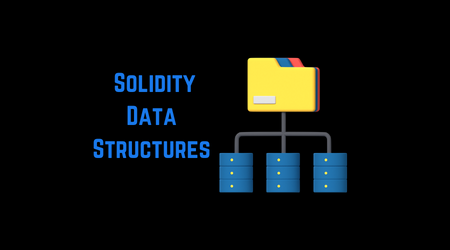Do you ever find yourself struggling to grasp the intricacies of Solidity data structures? Well, fear not!
In this comprehensive guide, we will dive deep into the world of Solidity data structures, exploring their key features and importance.
By mastering these structures, you will gain a thorough understanding of how to efficiently organize and manipulate data in your Solidity projects.
So, let’s embark on this journey together and unlock the power of Solidity data structures!
1. Key Takeaways
- Solidity data structures include mappings, arrays, and structs.
- When implementing data structures in Solidity, consider gas costs and efficiency.
- Solidity data structures are crucial for creating efficient and secure smart contracts.
- Familiarize yourself with best practices and guidelines for optimizing smart contracts using data structures in Solidity.
2. 5 Key Solidity Data Structures
To understand key Solidity data structures, you’ll need to familiarize yourself with mappings, arrays, and structs. These data structures are essential for implementing data structures in Solidity and are widely used in smart contracts.
Mappings are key-value pairs that allow efficient storage and retrieval of data.
Arrays are ordered lists that can hold multiple elements of the same type.
Structs are custom data types that can combine different variables into a single entity.
Now, let’s explore Solidity’s data structures in more detail.
3. Exploring Solidity’s Data Structures
Exploring Solidity’s data structures can be a complex task, but it is essential for developers. To successfully implement data structures in Solidity, you need to understand its intricacies and challenges. Here are three key aspects to consider:
- Implementing data structures in Solidity requires careful consideration of gas costs and efficiency. Solidity’s limited memory capabilities and expensive storage operations necessitate optimizing your code to minimize gas consumption.
- Challenges in working with Solidity data structures involve handling complex logic and ensuring the security of your contracts. Solidity’s lack of built-in error handling requires developers to be meticulous in their code implementation to prevent vulnerabilities and bugs.
- Solidity’s data structures, such as arrays and mappings, have unique features and limitations. Understanding how to access, modify, and iterate through these structures is crucial for efficient contract development.
4. Understanding the Importance of Solidity Data Structures
Implementing and utilizing Solidity’s data structures is crucial for you, as a developer, to create efficient and secure smart contracts. However, it is important to understand the limitations of Solidity’s data structures in order to avoid potential issues.
By following best practices for using Solidity data structures, such as properly allocating memory and minimizing gas costs, you can optimize your smart contracts for better performance.
In the following section, we will provide a comprehensive guide to Solidity data structures.
5. A Comprehensive Guide to Solidity Data Structures
By familiarizing yourself with the best practices and guidelines for using Solidity’s data structures, you can optimize your smart contracts and ensure efficient and secure execution.
Implementing data structures in Solidity is essential for organizing and manipulating data effectively within your smart contracts. Follow best practices such as using the appropriate data structure for your specific needs and avoiding excessive gas costs.
Make use of Solidity’s built-in data structures like arrays, mappings, and structs to simplify and streamline your code.
Understanding and implementing data structures in Solidity is a crucial step towards mastering solidity data structures and creating robust and efficient smart contracts.
6. Mastering Solidity Data Structures
Mastering Solidity’s data structures is key to optimizing smart contracts and ensuring efficient execution. Implementing data structures in Solidity requires a meticulous understanding of their functionality and proper usage.
To achieve this, it is crucial to follow best practices for using Solidity data structures in smart contracts. This includes carefully selecting the appropriate data structure for the task at hand, considering gas efficiency, and avoiding potential security vulnerabilities.

